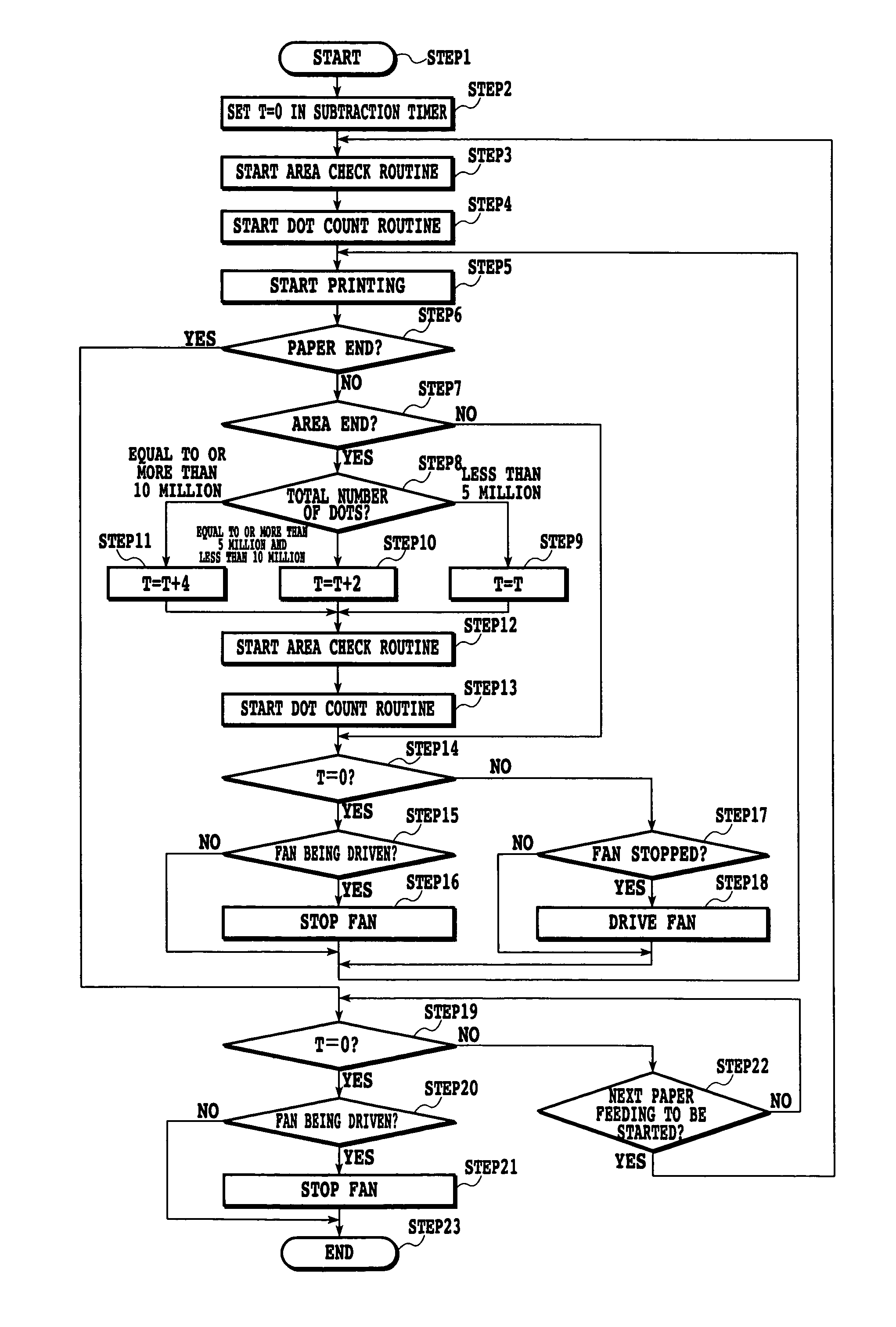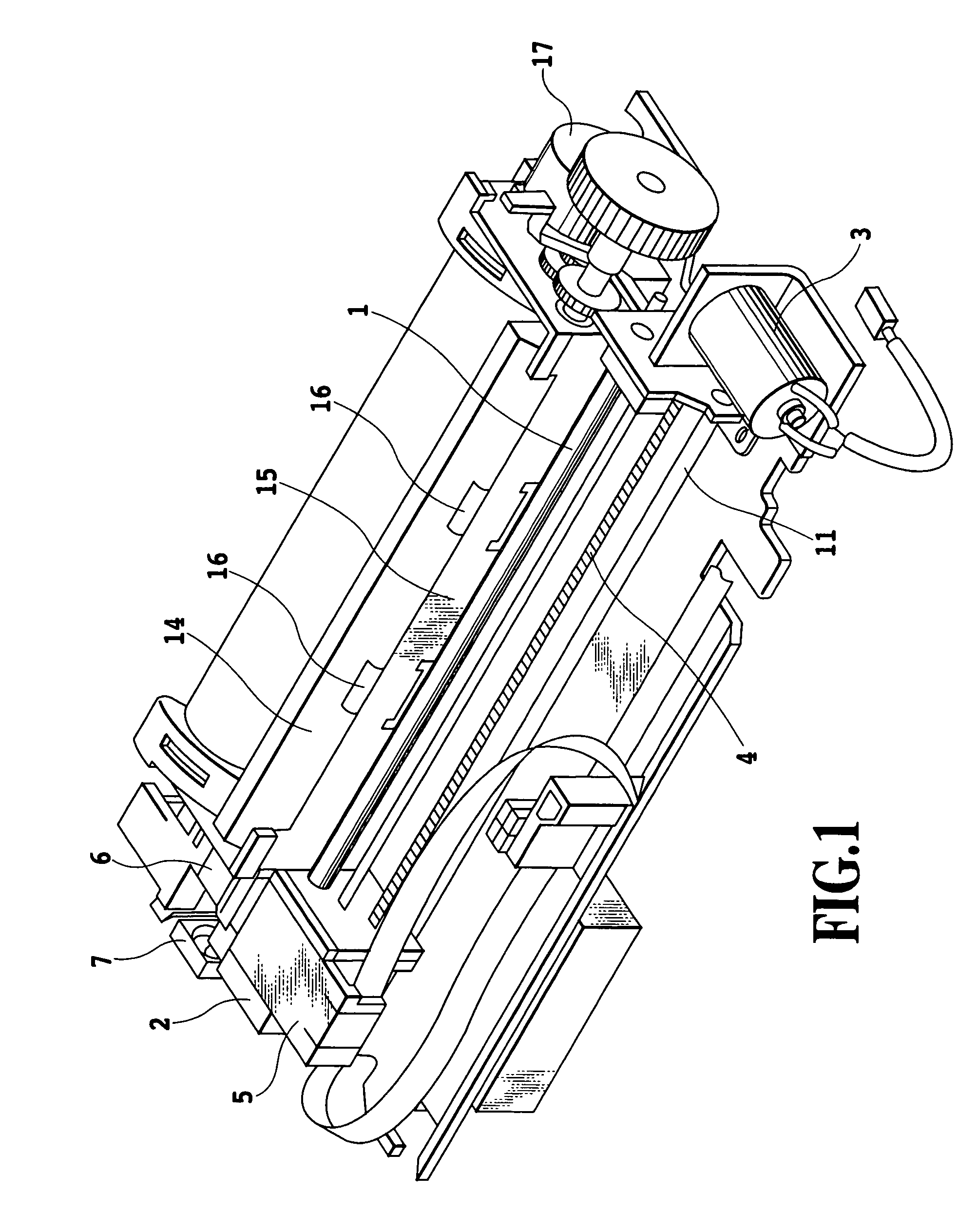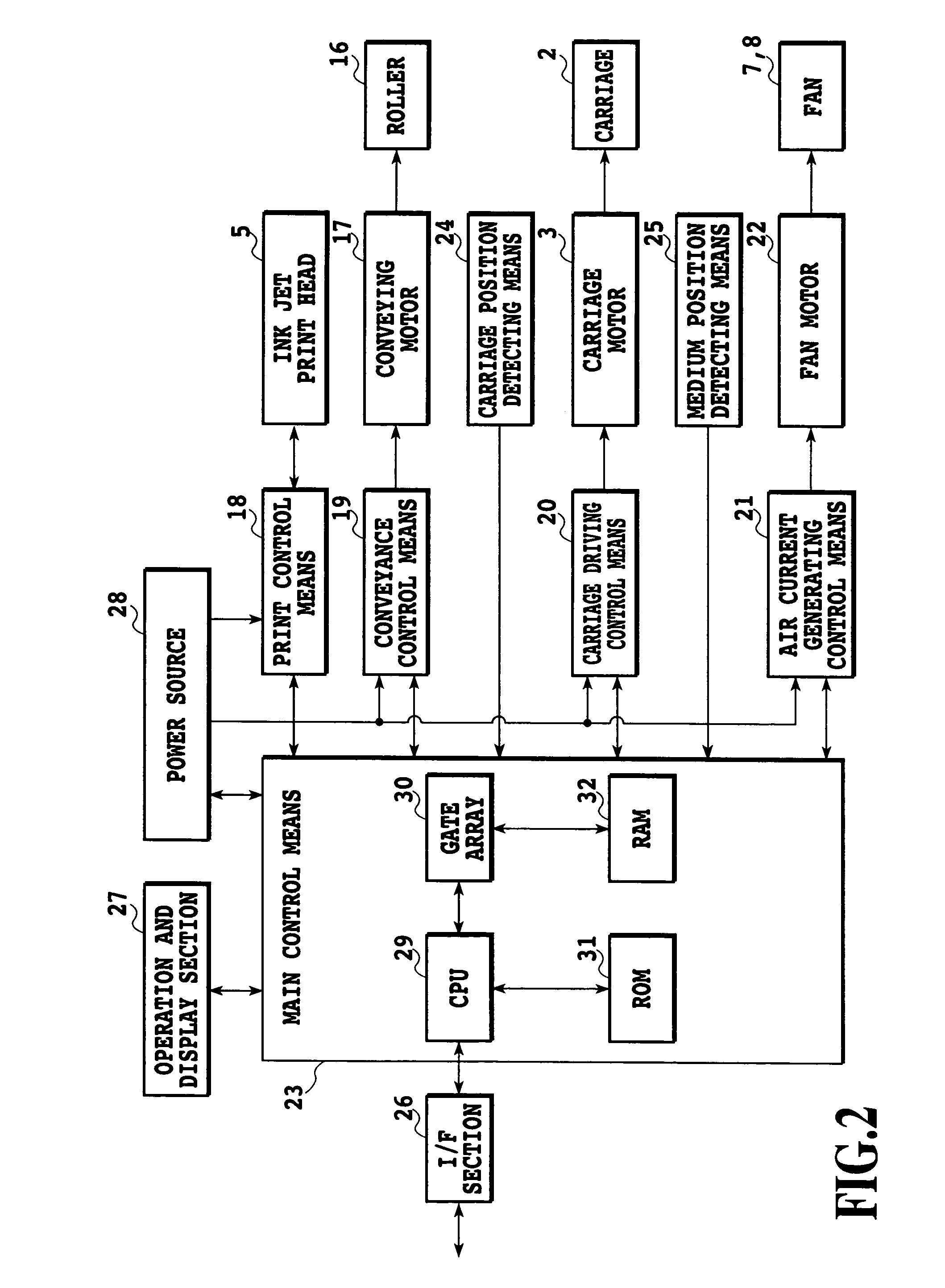Ink jet printing apparatus and ink jet printing method with an air current generating means to remove ink mists generated in the apparatus
a technology of air current generation and ink jet printing, which is applied in the direction of printing, other printing apparatus, etc., can solve the problems of ejecting ink mist from the print head, hindering the formation of appropriate print images, and affecting the effect of printing quality, so as to achieve efficient driving of current generating means, reduce the amount of air current generated, and remove the effect of dropping
- Summary
- Abstract
- Description
- Claims
- Application Information
AI Technical Summary
Benefits of technology
Problems solved by technology
Method used
Image
Examples
first embodiment
(First Embodiment)
[0025]First, a first embodiment of the present invention will be described with reference to FIGS. 1 to 4.
[0026]FIG. 1 is a perspective view schematically showing the appearance of an ink jet type printing apparatus as a first embodiment of the present invention. As shown in this figure, a carriage 2 is slidably attached to shafts 1 and 11 fixed to a frame of the ink jet printing apparatus. The carriage 2 is driven by a carriage motor 3 and a carriage belt 4 that are carriage driving means, to reciprocate along the shafts 1 and 11. An ink jet head 5 as printing means according to the present embodiment is mounted on the carriage 2. A large number of nozzles are formed in the ink jet head 5 and contain respective energy generating elements such as heating elements which generate ink ejection energy. When any of the energy generating elements is driven in response to a print control signal, described later, the print head ejects ink from the nozzle corresponding to t...
second embodiment
(Second Embodiment)
[0050]Now, a second embodiment of the present invention will be described with reference to the drawings. The second embodiment is configured as shown in FIGS. 1 and 2 as in the case with the first embodiment.
[0051]With reference to the flowchart in FIG. 4, description will be given of a control operation according to the second embodiment.
[0052]First, when the printing apparatus is powered on at STEP1, a paper feeding operation is performed at STEP2. Subsequently, at STEP3, a voltage V1 is provided to the fan motor 22 as a driving voltage V to rotate the fan 7. Then, at STEP4, an area check is started to manage the amount of print medium fed by rotation of the conveying motor 17. In the second embodiment, area management is carried out every inch to determine whether or not the print position has reached the area end. At STEP5, the dot count routine is started to count the number of dots in each area. The count obtained is used to determine the fan driving time.
[...
third embodiment
(Third Embodiment)
[0059]In the first and second embodiments, the driving conditions for the air current generating means is determined on the basis of information on the number of print dots per unit area (each area). The present invention is not limited to this aspect.
[0060]That is, the amount of ink provided does not depend only on the number of print dots but also on other conditions (for example, an environment temperature or a head temperature). Specifically, the amount of ink provided tends to increase consistently with the environment temperature. In contrast, the amount of ink provided tends to decrease consistently with the environment temperature. That is, even with the same number of print dots, the amount of ink provided is relatively large when the environment temperature is high. In contrast, the amount of ink provided is small when the environment temperature is low. Accordingly, to determine more accurately the amount of ink provided per unit area, it is preferable t...
PUM
 Login to View More
Login to View More Abstract
Description
Claims
Application Information
 Login to View More
Login to View More - R&D
- Intellectual Property
- Life Sciences
- Materials
- Tech Scout
- Unparalleled Data Quality
- Higher Quality Content
- 60% Fewer Hallucinations
Browse by: Latest US Patents, China's latest patents, Technical Efficacy Thesaurus, Application Domain, Technology Topic, Popular Technical Reports.
© 2025 PatSnap. All rights reserved.Legal|Privacy policy|Modern Slavery Act Transparency Statement|Sitemap|About US| Contact US: help@patsnap.com



